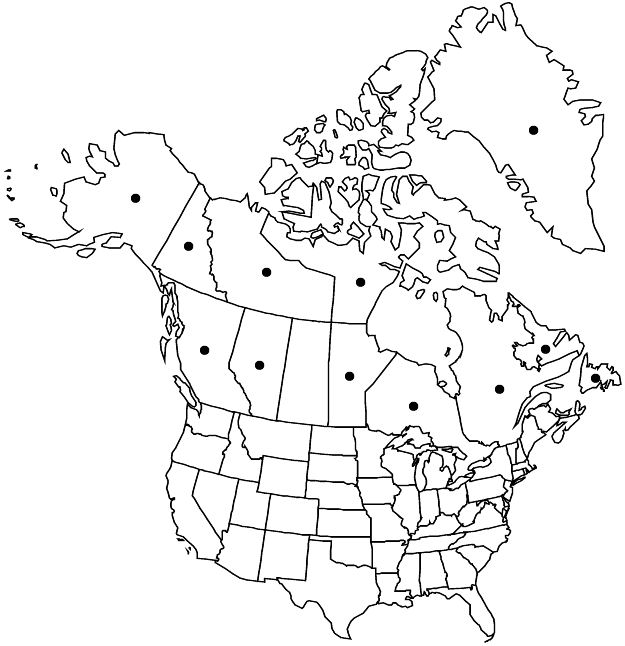Dryas integrifolia
Skr. Naturhist.-Selsk. 4(2): 171. 1798.
Plants 3–14 cm. Leaf blades linear to narrowly ovate or oblong to oval, 2–38 × 0.5–11 mm, base cordate to truncate or cuneate to rounded, margins usually entire or dentate to crenate, sometimes serrate in proximal 1/2, sinuses 5–15(–20)% to midvein, apex usually obtuse or acute, sometimes acuminate, surfaces usually smooth, sometimes rugulose, abaxial slightly hairy to tomentose, adaxial glabrous or sparsely hairy proximally on midvein, feathery hairs and stipitate glands absent. Peduncles 10–150 mm. Flowers erect at flowering; sepals linear-lanceolate, 3.5–9 × 1.5–2.5 mm; petals 8(–9), spreading, usually white or cream, sometimes yellow, 9–14 × 5–11 mm; filaments glabrous. Achenes 0.8–3.5 mm; styles 8–29 mm.
Distribution

Alta., B.C., Man., N.W.T., Nunavut, Ont., Que., Yukon, Alaska, e Asia (Russian Far East).
Discussion
Subspecies 2 (2 in the flora).
Hybrid swarms between the two subspecies of Dryas integrifolia are common (E. Hultén 1968).
Selected References
None.
Key
| 1 | Leaf blades linear to narrowly ovate, margins usually strongly revolute, bases cordate to truncate, apices acute. | Dryas integrifolia subsp. integrifolia |
| 1 | Leaf blades oblong to oval, margins usually flat, sometimes narrowly revolute, bases cuneate to rounded, apices obtuse. | Dryas integrifolia subsp. sylvatica |